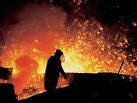| |
|
|
| |
|
|
 |
Supply
Chain by the Numbers |
|
| |
|
|
| |
August 21, 2025
|
|
| |
|
|
| |
|
|
| |
|
|
| |
Steel and Aluminum Tariffs Soar. The Heavy Cost of No Parking Spaces for Drivers. Cargo Thefts Rose Modestly for Change in Q2. US Manufacturing Flat in July |
|
| |
| |
| |
| h |
232 |

|
| That is how many products made of steel and aluminum are now subject to huge 50% tariffs, according to Customs and Border Protection bulletins published last Friday. The tariffs were active on Monday, with no provision for in-transit goods. The goods listed include locomotives, motorcycles, truck trailers and certain car parts, as well as numerous household appliances, such as refrigerators, dishwashing machines, stoves and ovens, laundry machines and microwaves. “By my count, the steel and aluminum tariffs now affect at least $320 billion of imports based on 2024’s general customs value of imports,” said Jason Miller, a professor of supply chain management at Michigan State University, in a LinkedIn post Sunday. |
| |
| |
| |
|
|
|
| |
| |
|
|
|
| That was the level of US manufacturing output in July, as represented in the monthly index from the Federal Reserve Bank, which was released this week. That was the same level seen in June, as the index has been in range that has seen it hover around the 99 -100 level for six months, with no real growth, but not recessionary declines either. The index was up 1.4% versus July of 2024. But at an index level of 100.2, it means US manufacturing output is now just about equal to that of the baseline year of 2017 (index = 100) now eight years later. It is also well below the all-time high of about 108, reached in late 2007. |
|
|
|
.
| |
| |
4% |
|
| That is the percent of Target employees that said in June that they have confidence the company is taking the actions needed to compete effectively. That according to a report by the Wall Street Journal this week. The struggling retailer, once a Wall Street darling, has seen 10 straight quarters of flat or falling sales. The Journal report also said that worker sentiment is even lower at Targetís Minneapolis headquarters. The Journal says Target has been hit in part by perceptions that other retailers have lower prices in a period of overall inflation. A new CEO is coming soon. |
| |
| Q |
| |
| |
| |
|
|
|
|
|
| |
 |
 |
|
| |
 |
![]() |
 |
|
| |
 |
Feedback |
|
|
|
![]()
|
No Feedback on this article yet.
|
|
![]() |
|
|
|
![]() |
 |
![]() |
 |
|
| |